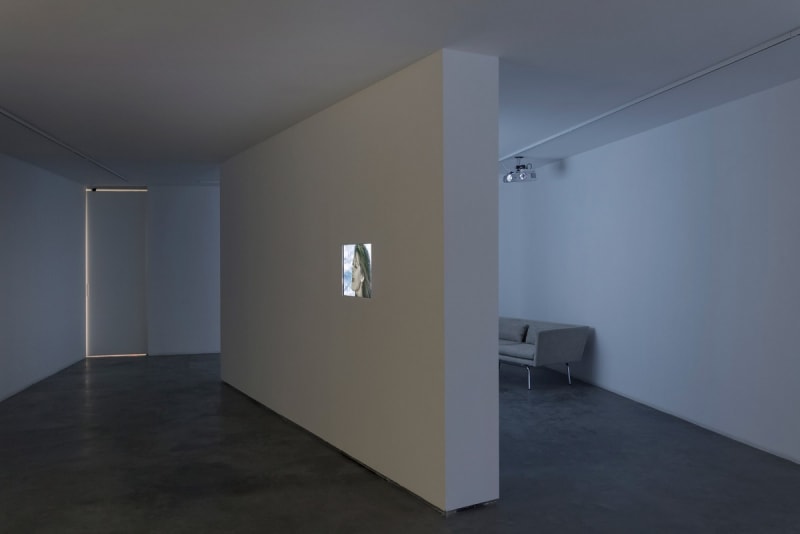Art Forum, SUMMER 2019, VOL. 57, NO. 10
Kaya Genç
Kaya Genç
In a show at New York’s Sculpture Center this past winter, the mid-career Turkish artist Banu Cennetog ̆ lu exhibited a 128-hour-long film amassing twelve years of her digital life as stored on numerous cameras, phones, computers, and hard drives. This documentary approach to tackling the everyday amid Turkey’s turbulent trajectory intersects with the performative aesthetics of Zeyno Pekünlü, a Turkish artist a decade younger than Cennetoğlu. Pekünlü’s latest Istanbul exhibition also centered on a large video canvas: the nine-hour İş, (Work; all works 2019), which portrays her daily routine. A gray sofa placed in front of a plasma screen invited visitors to
experience Pekünlü’s workday in its entirety. Shot from the built-in camera of her MacBook and recalling a YouTube vlog, the auto-portrait consists exclusively of the artists reading from the internet, mumbling, murmuring, and thinking out loud emotionlessly. She reacts to news articles, Facebook comments, work emails, and WhatsApp messages with apathy and alienation. The video’s static frame shows a background empty but for a door and a framed engraving on the wall. The world reaches her eyeballs via a fixed screen, in fragments and as data, and it overwhelms her.The specter of digital surveillance underlies Pekünlü’s exhibitionism. In the footage we see, she pretends that she doesn’t know she’s being recorded, but her anxious movements suggest her suspicion of it: An artist known for her lecture performances, Pekünlü subtly conveys this perplexed mental state. An earlier video installation of hers, At the Edge of All Possibilities, 2014, inspired by Walter Benjamin’s essay “The Storyteller” (1936), concerned similar anxieties and featured Pekünlü in front of her MacBook, chronicling Turkey’s environmentalist protests at Istanbul’s Gezi Park in 2013. In Work, using alarming news stories and emails of concerned colleagues, Pekünlü surveys a more recent unease among Turkey’s artists. In early 2019, a Turkish court accepted the indictment of Osman Kavala, a businessman and philanthropist who had been arrested without charge more than a year earlier for financing the Gezi protests, and revealed than members of Istanbul’s art world, including Pekünlü, were monitored, through wiretapping and physical surveillance, by intelligence officers. As night falls and Work comes to a close, Pekünlü’s face, illuminated by the screen, appears exhausted; there is little catharsis at the end of the day. Sisyphean boredom and Orwellian anxieties will reboot the next morning.
Yıpranan Yer (Worn Part), a three-minute-long collage of clips from classic Turkish movie melodramas, also considers exhaustion from overwork. Its fast-paced montage of moving images of Istanbul streets, buildings, and Turkish film actors, as well as of scenes illustrating those actors’ embodiments of joy and sadness, recall Christian Marclay’s experiments with temporality in The Clock, 2010. Worn Part also engages the materiality of the film stock: In highlighting the source footage’s wear and tear—the fingerprints, dirt, and
scratches the celluloid has accumulated over many years—the piece ponders what an artwork’s reproduction does to its form. Ultimately, Worn Part examines collective memory in the age of mechanical reproduction. The Istanbul those old films record no longer exists; the film stock that carries their representations is also fading. In the role of Benjaminian storyteller, Pekünlü invoked that past, and her fragile position in Turkey’s cloudy present, through two diverse works of similar intellectual weight.
June 1, 2019

